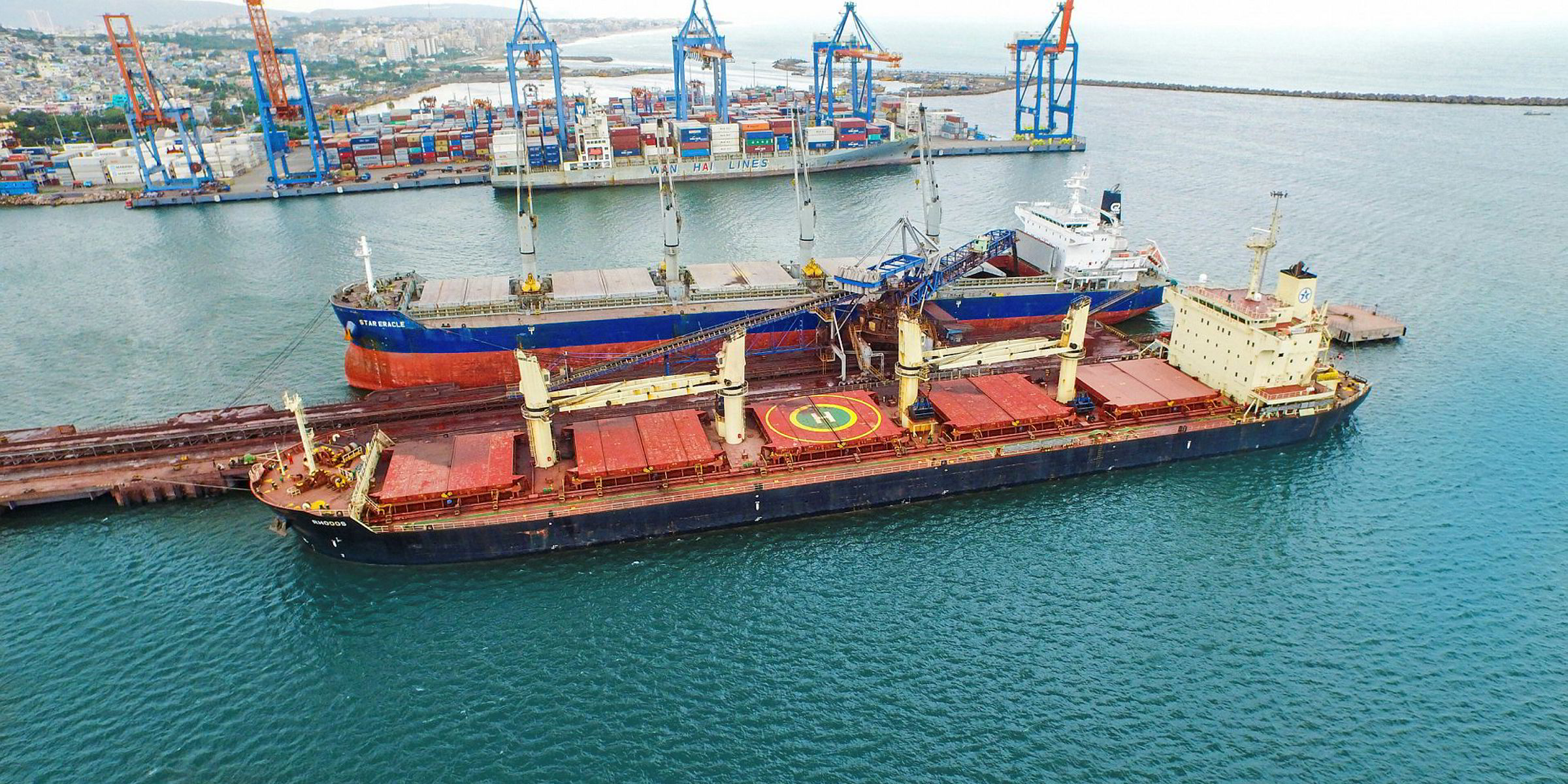China's ports are seeing a turnaround in domestic iron ore and crude demand but expect a further hit in container volumes.
Iron ore inventories in Chinese ports remain steady but mills last week began reducing their own steel inventories for the first time since the onset of the coronavirus, according to the China Port and Harbor Association (CPHA). An official of the port industry lobbying and information group told TradeWinds the CPHA expects this to translate soon into reduced volumes.
Last week China's biggest iron ore discharge ports -- Tianjin, Ningbo-Zhoushan, Qingdao and Rizhao -- saw a week-on-week leap in iron ore throughput of 14.6%, but the official said this change could be misleading as most of it is down to a temporary concentration of ships at Tianjin, which accounted for most of the figure for the four ports.
Nationwide, the iron ore inventory stood last week at 118m tonnes at major ports with ore leaving the port yards at a rate of 2.99m tonnes per day, about the same as the week before.
But domestic steel mills have increased their operating rate to about 74% and decreased their inventory of steel products for the first time.
Meanwhile, the CPHA said this week that China's major refineries are expanding production capacity to work through glutted crude oil inventories. Shandong province's teapot refineries are also back at work, and both Chinese refiners and traders are eager to stock up on crude as producers wage a price war.
Crude oil throughput of major Chinese ports increased by 14.8% this week, also in this case helped significantly by a concentration of ships at one port, Shandong province's Rizhao.
The first imports of price-driven low cost crude oil cargoes are awaited in China in late April.
The picture in container volumes is more complicated, as China recovers and resumes production but still awaits the effects of the coronavirus crisis on its customers abroad.
Especially in container throughput, China's overall port activity is currently showing the effects of a nationwide restart of industrial production and foreign trade. The weekly CPHA report said container throughput at China's eight main hub ports has increased more rapidly than hitherto, by 6.2% compared to a month previous.
Growth in China's Pearl River Delta is especially strong, with Shenzhen and Guangzhou moving over 20% more boxes last week than a month previously, driven by factory production restarts in the hinterland of those southern ports.
The CPHA expects the country's container throughput to suffer a second-quarter slowdown of 5% to 10% year on year.





